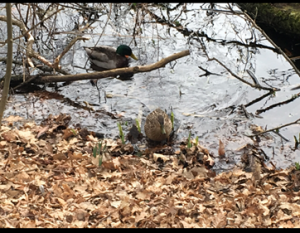The contents of the cache and related activities will be linked to the teaching and learning of the Food chain in and around Airthrey Loch (Stirling University very own private loch). The geocache is aimed at educating primary school aged children about food chains. This concept will be taught through the three activities provided within the geocache. The first activity will provide the pupils who find the geocache with a challenge, this will be to find a toy duck hidden in the area, the pupils will be given a single clue to help them locate the duck. This will keep the children engaged and enthusiastic about the subject as the challenge is fun and different from usual lessons they’d have in a classroom.
The activity is relevant to the loch and the educational contents of the geocache. The geocache will include two kazoos, the children will be encouraged to try and imitate the noise a duck would make using the kazoos. The kazoos give the children something fun to do whilst keeping them on the subject of the loch’s food chain. The third and final activity in the geocache will be an inquiry-based approach and will include a list of pictures and names of 7 organisms native to the loch, the children will then be asked as a group to put the animals in what they think the correct order from top to bottom of the food chain would be. (The correct order will be revealed at the end.) This should spark curiosity among the children and be the catalyst for questions. This geocache can be adapted for any habitat by changing the 4-10 animals used in activity 3.
The place in which we shall be placing our geocache lies in an area right next to Airthrey Loch under the end of the bridge. Since this is next to the loch, it is one of the many places where the ducks are going to be, for reasons such as: feeding, looking after their babies, excreting waste, reproducing or simply a place to be while walking around the loch.
In relation to education for sustainability, this geocache mainly relates to global goal number 12 which looks at responsible consumption as it makes the children think about the effect that one change can have in the food chain. They can also realise their own impact on the local and global environment as well and in turn they may change their actions in regard to their future actions. This geocache can also be related to global goals 14 and 15 which relate to life on land and under water. It relates to these goals as the food chain can impact both of these land forms even if the animals in that particular food chain are not in the land as the possibly infected animal can contaminate a wide variety of sources.
University of Stirling students> Design by:
Alexander Orr (3rd Yr)
Mark Revie (3rd Yr)
Glen Kelly (3rd Yr Heritage BA student)
















